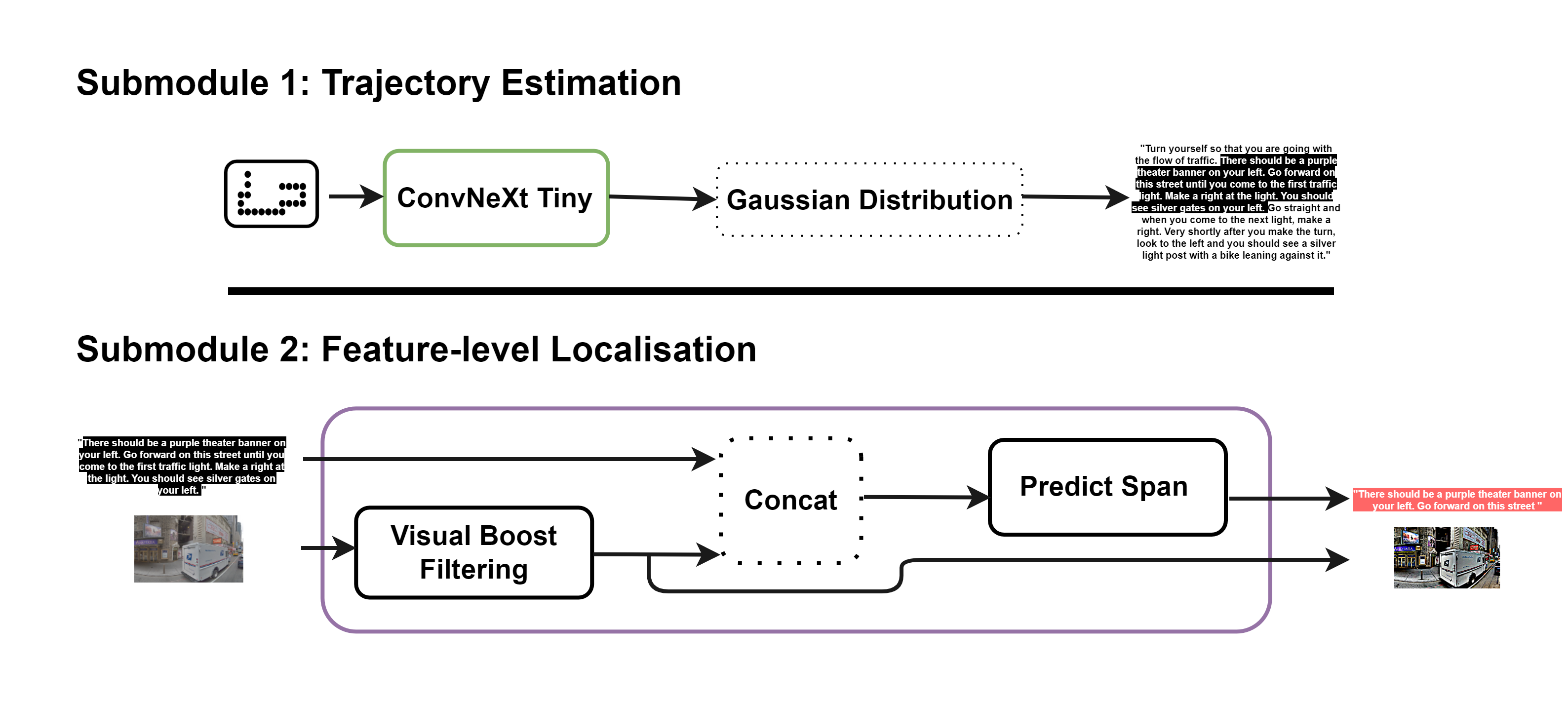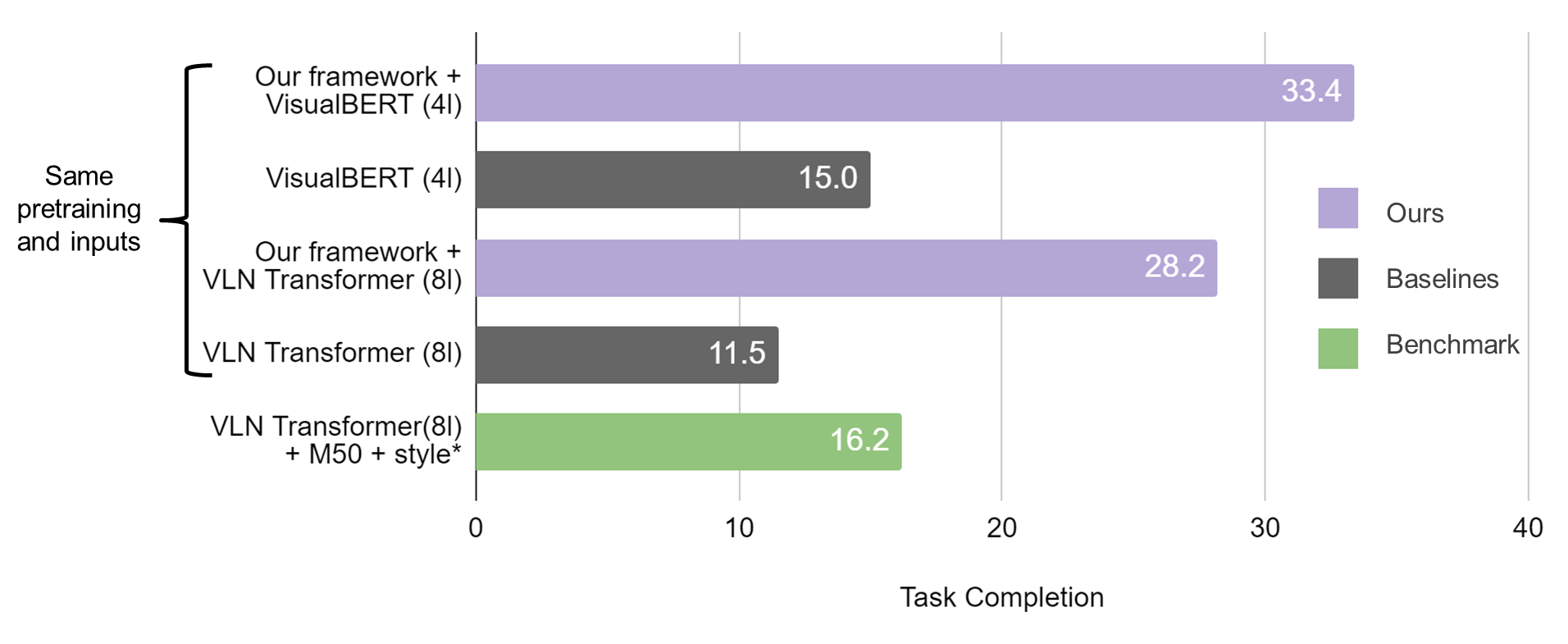priority map
a priority map module for vision-and-language navigation
Paper: https://openaccess.thecvf.com/content/WACV2023/html/Armitage_A_Priority_Map_for_Vision-and-Language_Navigation_With_Trajectory_Plans_and_WACV_2023_paper.html
Code: https://github.com/JasonArmitage-res/PM-VLN
Data: https://zenodo.org/record/6891965#.YtwoS3ZBxD8
Citation: see end of page.
Our research addresses transformer-based approaches in vision-and-language navigation (VLN). We propose improving current systems with a computational implementation of a mechanism described in neurobiological studies called a priority map.
As agents move through an urban environment, they are surrounded by signs, moving traffic, and other people. A priority map, is a cortical loop that mediates over high-level goals and lower level cues on salient features to identify relevant information:


Our priority map module consists of two submodules. The first takes a new type of input called a path trace and forms a topdown trajectory plan. In the second step, a series of operations on visual and linguistic inputs localises corresponding information on prominent features.
The overall result is that the cross-modal inputs are both synchronised to each other and to the current point in the trajectory.

The priority map module is a component in a novel cross-modal machine learning framework that takes the input of a transformer-based main model and combines this with the output of the prioritisation process:

On the Touchdown task for VLN, our best performing variant more than doubles the Task Completion rate of the previous benchmark system based on transformers (Zhu et al., (2021)).
A comparison of the purple and grey bars also demonstrates how our framework adds major gains to the performance of both general vision-and-language models and purpose-built architectures for VLN.

Please use our code and data - and add a citation if you find it interesting:
Armitage, Jason, Leonardo Impett, and Rico Sennrich. “A Priority Map for Vision-and-Language Navigation with Trajectory Plans and Feature-Location Cues.” arXiv preprint arXiv:2207.11717 (2022). Link: https://openaccess.thecvf.com/content/WACV2023/html/Armitage_A_Priority_Map_for_Vision-and-Language_Navigation_With_Trajectory_Plans_and_WACV_2023_paper.html
BibTeX:
@INPROCEEDINGS{10030783,
author={Armitage, Jason and Impett, Leonardo and Sennrich, Rico},
booktitle={2023 IEEE/CVF Winter Conference on Applications of Computer Vision (WACV)},
title={A Priority Map for Vision-and-Language Navigation with Trajectory Plans and Feature-Location Cues},
year={2023},
volume={},
number={},
pages={1094-1103},
doi={10.1109/WACV56688.2023.00115}}